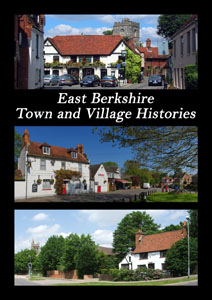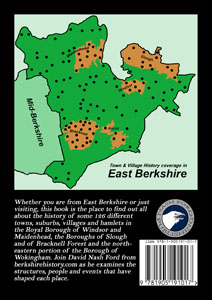 |
 |
||||||||
|
|
The name Winkfield comes from Wineca’s Field, Wineca being a man’s name meaning Little Friend. In AD 942, when the village was owned by a nun named Saethryth, the parish boundary was the subject of a detailed charter. This document identified such places as Bracknell, Black Moor (around Burleigh/North Ascot) and Chawridge Manor Farm. The original 13th century manor house at the latter place probably stood within one of the old moats to be found at Maiden’s Green. It was owned by the nuns of Bromhall Priory until St John’s College, Cambridge took it on at the Dissolution of the Monasteries. They appointed Thomas Warde, Keeper of Cranbourne Chase, to look after it. In 1540, Thomas' son, Richard Warde, was granted the manor of Winkfield, but he preferred to live at Hurst near Wokingham, where he built himself a fine house: Hurst House. During the patronage of the next generation of Wardes, the old 14th century parish church underwent sweeping changes in 1592. This is when the extraordinary row of wooden pillars was installed down the middle of the nave, so that bride and groom have to weave in and out as they return from the altar. An old story tells how the rebuilding work was hampered by the Devil until it was agreed that he could build the northern half himself. The columns were used to demark which side was his. The church also houses a very interesting twelfth century shaft piscina with intricate carving, including a horn-blowing Windsor Forest huntsman. The 17th century White Hart Inn, on the other side of the road, used to be the local Court House. Judge Jeffreys is said to have once sat in judgment there. The Wardes’ manor house, called Godwins, also stood somewhere in this area, but they would have rarely visited and it probably fell into disrepair during the time of their successors, the royalist Harrisons. In 1652, during the Commonwealth, the confiscated manor was sold off and divided up. There are a number of other great houses in the northern section of the parish. One of the best known is the third manor in Winkfield, at Foliejon. The present house on the hill dates from 1801. It was the home of the exiled King Haakon VII of Norway during the Second World War. The original moated manor down on the Drift Road, once called Bellestre, was the early 14th century Berkshire home of John de Drokensford, the Bishop of Bath and Wells, who needed a base near to the Royal Court at Windsor. He may have been the one to promote the holy well of St Hubert, in the grounds, as a cure for eye complaints. The manor’s name is said to have changed when a certain lady of the manor discovered her footman in flagrante delicto with one of the village wenches. She apparently exclaimed, “This is folly, John!”. It is more likely, however, that the extravagant bishop built an early folly at his Berkshire manor, for the lands were eventually seized by the King as security against Drokensford’s mounting debts. The deer park surrounding it was enclosed in the early 14th century by Oliver De Bordeaux, one of King Edward II’s Gascon favourites. He held the manor as his main residence in return for the rent of a single red rose. It later passed to his step-son, Sir William Trussell, but King Edward III wanted to attach the park to Windsor Great Park and soon forced William to swap it for Eaton Hastings, near Faringdon. He later made his home at Shottesbrooke. Not far from Foliejon is the Neo-Tudor-Gothic New Lodge, built in 1857 for the Belgian Ambassador, Jean-Sylvain Van de Weyer. The previous house had been the home of Princess Sophia of Gloucester. In the 19th century, an old lady lived in Winkfield who was generally thought to be a witch. One story is told of how a man who borrowed her spectacles and failed to return them, found that the lady turned herself into a squirrel and pelted him with nuts. Later, when a number of workmen made too much noise in an adjoining house, she became a hare and made trouble around the worksite. One of the labourers, however, brought his dog to work and set it on the rodent. The hare got a bloodied leg and barely escaped with its life by jumping through the window of the witch’s house. Spying on the old lady later that evening, the workmen saw her nursing her wounded leg by the fire. Read more history of
Winkfield and other settlements in the parish in David Nash Ford's book, 'East Berkshire Town and Village
Histories'.
References: J Harris & GM Stantan's 'A History of Winkfield' & R Timbrell's 'Chavey Up, Down & Around'.
|
||||||||
| © Nash Ford Publishing 2001; Revised 2020. All Rights Reserved. | |||||||||





